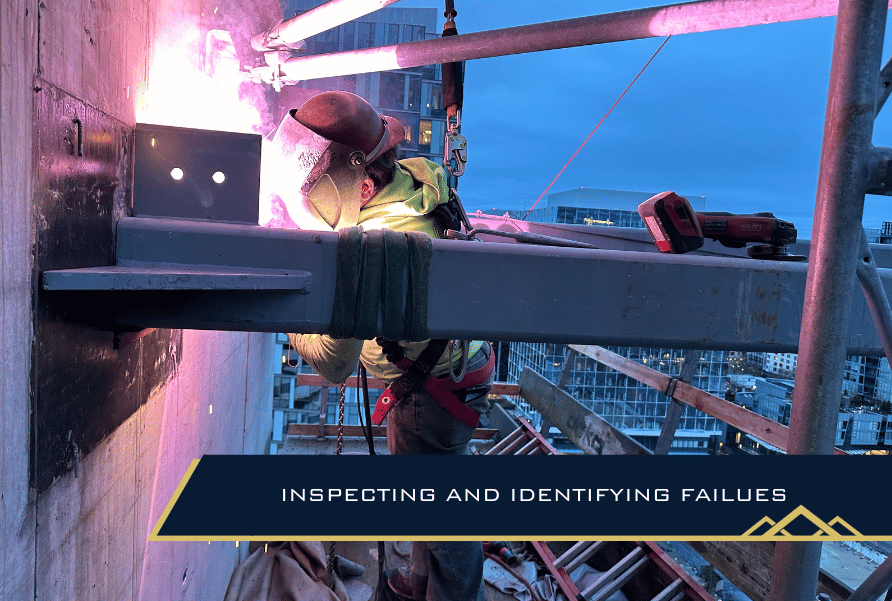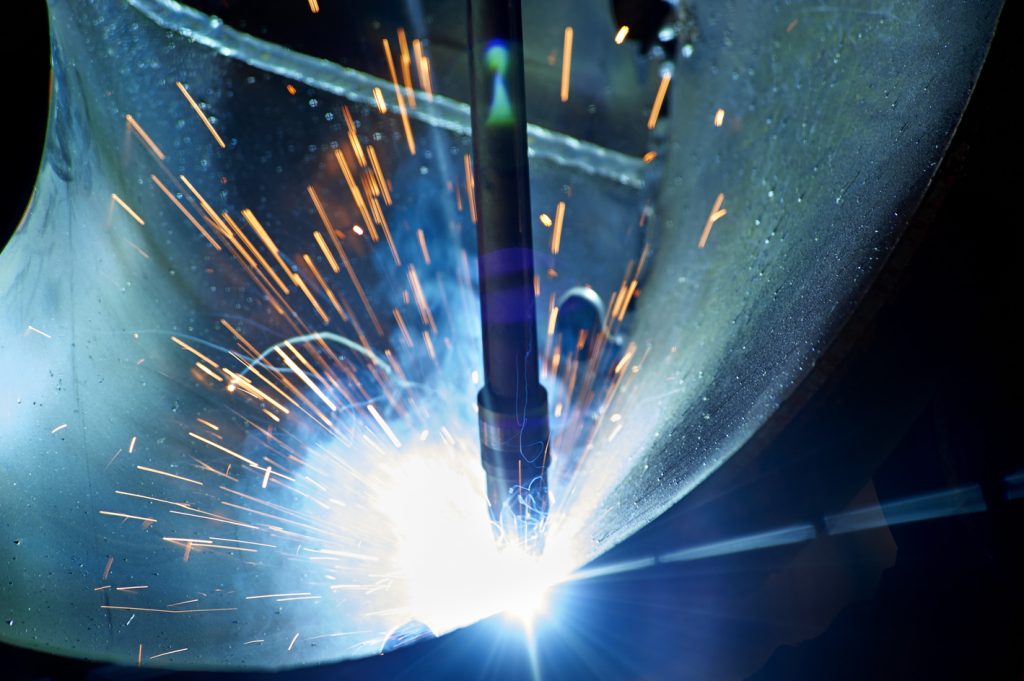How to Make Certain Quality with Welding Inspection Gilbert Arizona: Ideal Practices
How to Make Certain Quality with Welding Inspection Gilbert Arizona: Ideal Practices
Blog Article
Exploring the Importance of Welding Inspection in Industrial Applications: Protecting Against Failures and Enhancing Long Life
Welding evaluation offers as an important line of protection in commercial applications, guaranteeing the architectural stability and integrity of bonded parts. By systematically determining problems such as porosity and insufficient blend, evaluations not only avoid failures yet also prolong the lifespan of vital properties.
Duty of Welding Examination
Welding assessment functions as a vital guard in commercial applications, making sure that welded frameworks satisfy specified criteria of quality and security. This procedure includes an organized examination of welds to verify their stability, strength, and conformity with established codes and specifications. The function of welding assessment is diverse, encompassing both visual evaluations and non-destructive screening methods, which might consist of ultrasonic, radiographic, or magnetic bit screening.

In addition, welding examination plays a vital duty in regulative compliance. Ultimately, the role of welding inspection is important in promoting security, boosting performance, and securing financial investments in industrial facilities.
Typical Welding Defects

One of one of the most common defects is porosity, characterized by small gas pockets entraped within the weld steel. This happens as a result of contaminants or inappropriate protecting gas, endangering the weld's toughness. An additional considerable flaw is insufficient combination, where the weld metal stops working to bond effectively with the base product, potentially causing architectural weaknesses.
Cracks can additionally establish during or after the welding process, typically attributed to thermal stresses or improper cooling prices. Additionally, damaging, where the base metal is worn down along the weld bead, can compromise the joint and is commonly brought on by extreme warmth input or incorrect technique.
Moreover, absence of infiltration happens when the weld steel does not get to the root of the joint, leading to inadequate strength. Understanding these usual issues is important for welders and inspectors alike to make sure that bonded structures meet security and performance requirements, ultimately protecting against potential failings in industrial applications.
Benefits of Regular Examinations
Regular examinations offer as a vital guard in making sure the dependability and durability of bonded structures. These analyses determine possible issues and weak points that might compromise the integrity of welds, permitting prompt removal before problems intensify. By implementing a structured examination routine, companies can dramatically lower the risk of catastrophic failures that may cause pricey downtime, devices substitute, and even crashes.
Additionally, normal examinations add to enhanced quality assurance throughout the welding process. By adhering to a regular examination timetable, companies can make sure that their welding techniques fulfill recognized quality criteria and best practices. This not just fosters a society of responsibility however likewise encourages constant improvement among welding employees.
On top of that, routine inspections assist in better maintenance planning. By recognizing damage early, organizations can tactically schedule replacements and repairs, decreasing disturbance to operations. This proactive approach ultimately brings about extensive possession life-span and boosted overall productivity.
Lastly, a commitment to regular assessments can boost a firm's credibility in the sector. Customers and stakeholders significantly worth organizations that focus on safety and security and high quality, therefore enhancing depend on and potentially bring about raised business possibilities.
Sector Criteria and Rules
Sticking to industry requirements and laws is a basic element of welding assessment that complements the advantages of routine analyses. These standards, established by companies such as the American Welding Culture (AWS) and the American Society of Mechanical Engineers (ASME), provide a framework for ideal methods in welding processes, materials, and examination strategies. Conformity with these regulations makes sure that welds satisfy the called for quality and safety and security standards, dramatically decreasing the threat of structural failings.
Regulative bodies like the Occupational Safety And Security and Health Management (OSHA) better implement standards that secure employees and the directory setting throughout welding operations. By adhering to these developed requirements, industries can boost the integrity of their structures and components, guaranteeing they perform as meant under various functional conditions.
Moreover, adherence to industry standards fosters uniformity in quality assurance, assisting in smoother interaction amongst stakeholders and governing agencies. This alignment not just lessens liability threats yet also improves the trustworthiness of companies in open markets. Inevitably, compliance with welding criteria and policies is not merely a lawful obligation; it is an important investment in safety, efficiency, and long-term functional success.
Future Trends in Welding Examination
As markets continue to evolve, the future of welding examination is poised to integrate innovative modern technologies that improve accuracy and efficiency. Among one of the most considerable trends is the adoption of automation and robotics in evaluation processes. Automated systems can conduct evaluations quickly, reducing human mistake and boosting throughput in manufacturing atmospheres.
Furthermore, the combination of artificial intelligence (AI) and artificial intelligence algorithms will allow predictive analytics, enabling real-time analyses and positive upkeep (Welding Inspection Gilbert Arizona). By evaluating information from previous evaluations, these modern technologies can identify patterns that can indicate possible failures, consequently prolonging the life-span of bonded components

Moreover, the fad in the direction of digitalization will result in enhanced data monitoring systems that facilitate much better tracking, reporting, and compliance with sector criteria. In recap, the future of welding evaluation is identified by technical improvements that assure to considerably boost integrity, security, and operational effectiveness in numerous industrial applications.
Conclusion
Finally, welding evaluation offers an important feature in making certain the stability and sturdiness of welded frameworks across numerous commercial applications. By identifying defects such check out here as porosity and insufficient fusion, regular examinations play a significant duty in risk mitigation and quality control. Adherence to market requirements and guidelines additionally improves operational security and dependability. As innovations in modern technology continue to progress, the future of welding examination promises increased accuracy and performance, eventually adding to the longevity of essential facilities.
Welding assessment serves as an essential line of defense in commercial applications, making certain the structural integrity and dependability of bonded parts.Welding evaluation offers as a vital safeguard in commercial applications, guaranteeing that bonded structures satisfy defined standards of high quality and safety - Welding Inspection Gilbert Arizona. Eventually, the duty of welding evaluation is crucial in promoting safety and security, enhancing efficiency, and protecting financial investments in industrial framework
These requirements, developed by organizations such as the American Welding Culture (AWS) and the American Society of Mechanical Engineers (ASME), give a structure for best techniques in welding processes, materials, and inspection strategies.In conclusion, welding examination offers an important function in making certain the stability and toughness of click to investigate bonded structures across various commercial applications.
Report this page